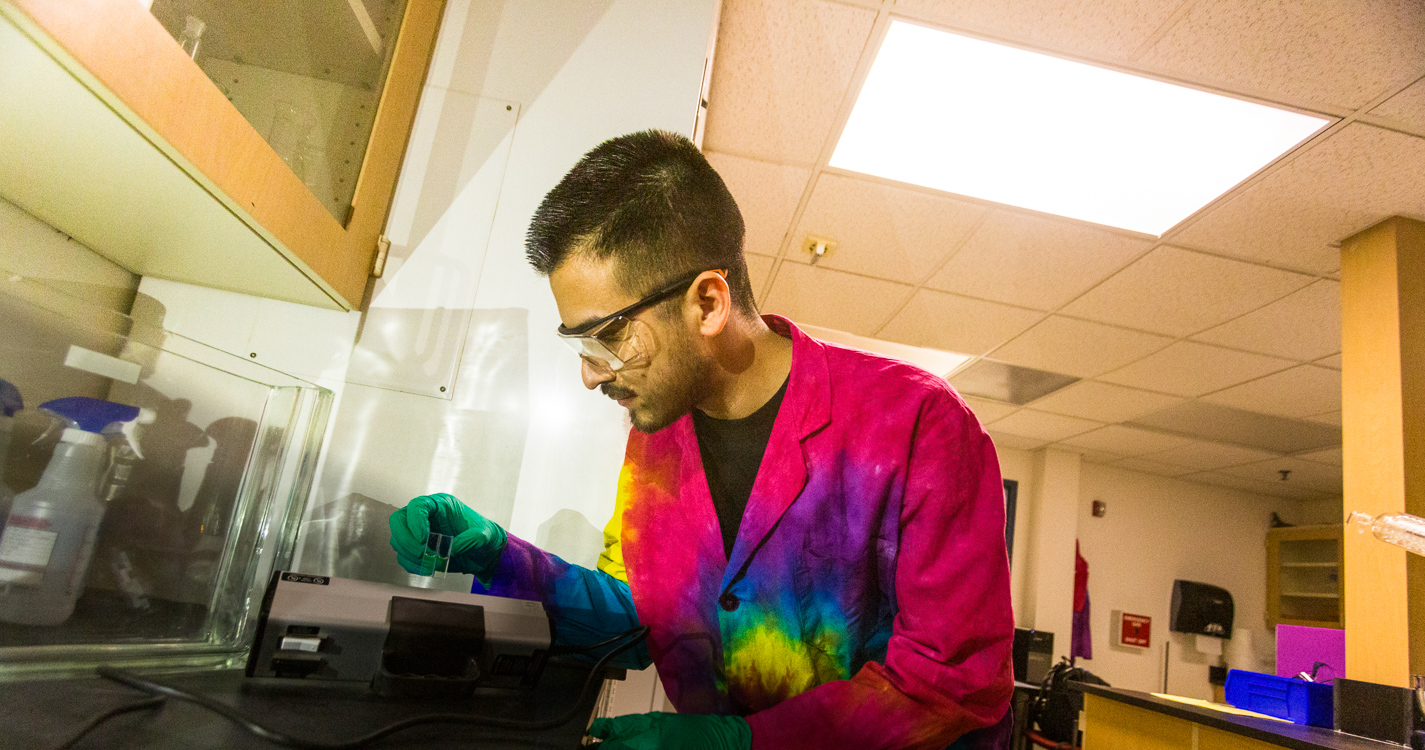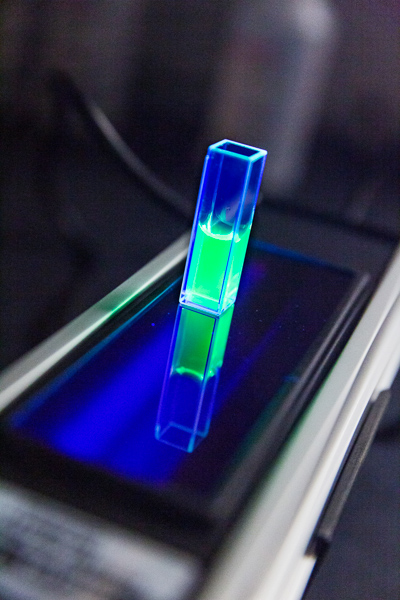Silent assassins lurk among us, waiting in the shadows.
The American Cancer Society estimates more than 46,000 Americans will die this year from pancreatic cancer. Another 31,000 will die from prostate cancer.
Most cancer screening is visual. Oncologists use advanced imaging technology to discover tumors inside the body, but the biochemical commandos in Willamette’s newest laboratory — Cooper Battle’s “Battle Lab” — are exploring another way to find cancer: They make it glow.
“By the time cancerous cells amass into a visible tumor, it can be too late,” says Battle, assistant professor of chemistry. “Imaging techniques are accurate, but they’re costly, require a skilled technician and aren’t available in low-resource countries where most cancer deaths occur.”
“What we’re hoping to do is detect cancer early on,” says Hernan Chavez Avalos ‘20, a biochem major working in the Battle Lab on the third floor of Olin Science Center.
Avalos is one of six students on Battle’s research team, which designs and uses fluorescent biosensors — naturally occurring molecules made from the building blocks of DNA.
Instead of an expensive scan to look for a tumor, Battle hopes to find a way to use a blood test to detect cancer.
Existing biosensors work great outside of the body, bonding to fragments of genetic code — in this case microRNA-21 — associated with cell growth in pancreatic and prostate cancers.
“MicroRNA-21 is expressed in cancer cells but not wholly contained within the cancer cells,” says Avalos. “It floats around in the blood.”
Biosensors come in different shapes and sizes, but these fluorescent molecules work more or less in the same way. The biosensor bonds with the target, in this case microRNA-21. When it does, the biosensor twists and folds into a different shape, allowing its fluorophore to shine.
Because human immune systems see these biosensors as virus DNA and attack them, existing biosensors must be manipulated through a relatively expensive process to be useful as a blood screening tool.
Instead, Battle’s team is developing a new biosensor to target microRNA, but the new biosensor promises to be more stable in blood — making it a potential candidate for detecting cancer early, maybe even before a tumor forms.
And an MD or PhD isn’t required to grasp the results of students’ experiments, just a black light. Fluorophores work by absorbing and re-emitting light at a lower frequency. Shining high frequency ultraviolet light onto the fluorophore returns visible light. It glows “Reanimator” green when in the presence of microRNA-21.
“The research is promising for future cancer patients and for our students,“ says Battle. “Student researchers develop their own sensor designs and test their predictions through spectroscopy. They gain experience with DNA folding, thermodynamics, chemical biology methods and modeling biological systems.”
Next up for the research team? They’re setting up a cell culture lab to further develop new biosensors.
“Students will have a chance to test their sensor designs inside the cell,” says Battle. “We’ll learn more about how new biosensors function overall, how they work in different environments and how they can be used to target specific cancers.”
Learn more about the team’s work at willamette.edu/go/battlelab.



